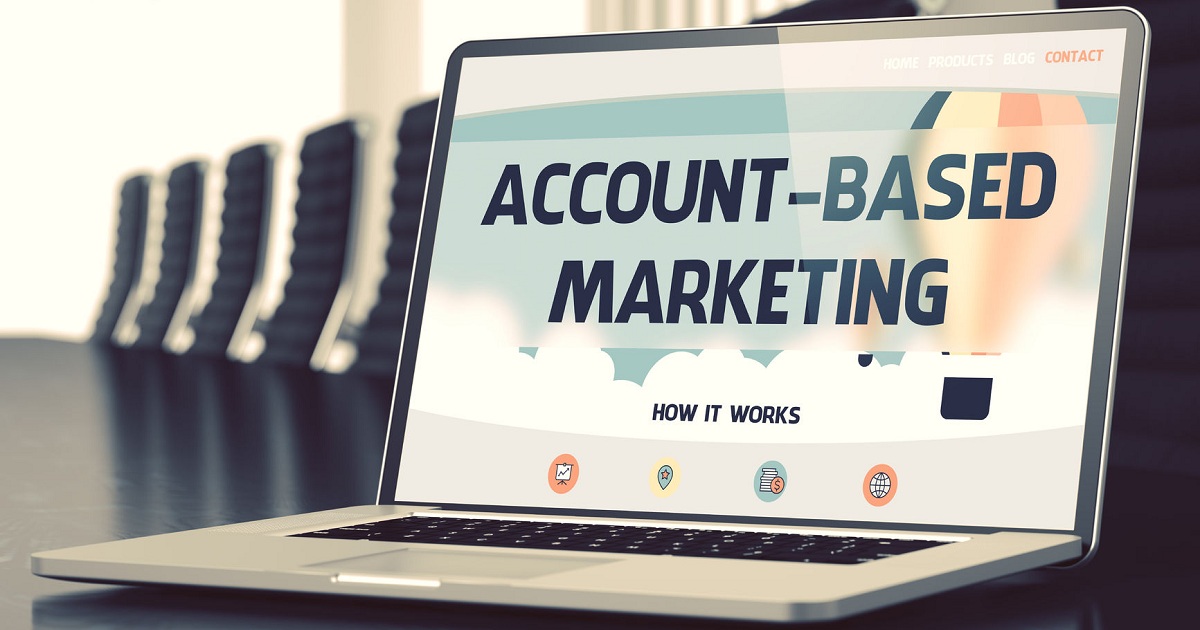
Buyer Intent Data
Article | March 6, 2023
These days the challenges that the marketing and the sales team face are tremendous. The pressure to meet targets, deadlines, achieve revenue, and at the same time keep the clients satisfied is not an easy task. And to add to the woes, there is massive competition in the industry.
But there is one way to overcome all the obstacles and achieve targets while keeping clients happy and satisfied. This strategy is ABM- Account-Based Marketing. ABM campaigns have been a trendsetter in the B2B marketing field for a long time. As it ensures successful marketing, businesses are turning towards this thriving approach.
What Exactly Is Account-Based Marketing?
Account-based marketing is identifying the target, high-value customers and selling your product/service to them. This ABM approach allows you to concentrate on exclusive clients and guarantees the best ROI.
What Is B2B Account-Based Marketing?
B2B account-based marketing is targeting an organization with specific and personalized marketing campaigns. When you target the decision-makers of an organization, you need to tread with caution. When you design a marketing strategy for them, personalize it, and deliver everything to increase their brand value.
Thus, ABM is a marketing strategy wherein the sales and the marketing team have to put their heads together to deliver an impeccable buying experience for the best and valuable clients.
Tactics to Implement a Successful Account-Based Marketing
According to the Pardot site survey, 89% of businesses reported higher ROI in ABM than traditional marketing methods.
If you develop an account-based marketing plan, here are some tips to follow:
Collaborate working of the marketing and sales team to identify high-value clients and gather maximum data about them.
Use social media to gather data and create a personalized approach for the clients.
Try to sync in with the brand of the target company to develop relatable content and graphics.
Recognize the expertise, pain points, and challenges of the target account and frame communication.
Send personalized emails addressing the challenges your target account faces.
Host face to face or virtual events
5 Trend-setting Examples of Account-Based Marketing
ABM is a marketing strategy that has shown guaranteed success in the B2B industry. You have to sculpt unique ideas and have a personalized approach towards your targeted clients. The clients should feel that you have made efforts to know them, understand them, and address the challenges that they face.
Some companies have achieved an altogether different benchmark in ABM strategy. As a result, these are prominent examples of B2B account-based marketing.
Let us go through their account-based marketing case study and learn their ways of execution.
Snowflake- Excellent Use of Content Creation
“We needed to make sure that when you see an ABM campaign, it’s reflective of not only sales input but also product marketing, partner marketing, field marketing, and our SDRs. We needed a way to co-create one cohesive message for our key accounts.” — Hillary Carpio, Director of ABM, Snowflake.
Snowflake, a cloud-based data warehousing company, utilized its in-house services in the best way to create a library of high-quality content. This content is used to create personalized experiences for high-valued and targeted accounts. Then, this personalized content creates account-based marketing campaigns customized to reach the target customers.
Gumgum- Using Technology the Right Way.
GumGum collaborated and created an effective marketing product for the Clorox brand. They showcased this product at the Clorox annual iConnect Conference.
The product they created was turning a temporary tattoo into a fascinating 3D animation while incorporating logos of the concerned brands. It was a hit among the Clorox brand, and almost 200 attendees downloaded the GumGum app.
Intridea- Making the Right Confrontational Approach
Intridea did take a risk by implementing the direct approach of ABM advertising. They rented a billboard right across the advertising giant Ogilvy’s Manhattan office. The billboard said, “Ogle this, Ogilvy.” Intridea also placed its logo and company URL at the bottom of the quirky line.
And they succeeded in fixing a meeting with Ogilvy’s CEO.
Payscale- Utilizing Data to Gain Profits
Payscale helps employers manage compensations in the right way. They also aid employees know their correct market value.
Payscale collaborated with their sales and marketing team to gather the correct information about ABM target accounts. Once they had ample information about the company’s decision-makers, they targeted the client with their best ad campaigns.
As a result, their ROI was six times more compared to any other marketing strategy!
O2- Gathered Data to Create Personalized Reports.
O2 is a leading ICT service provider.
The organization targeted many high-value clients and created personalized reports for them. Their modus operandi was to curate personalized reports on how the organization will benefit by utilizing O2 for their ICT services. The dedicated teams also emphasized on face to face meetings for customized strategies.
As a result, O2 had a successful ABM strategy as they achieved 313% of their target pipeline.
The Bottom Line
Account-based marketing strategies are incorporated in unique ways. As a result, there are many ideas where you can implement account-based marketing to stand out and gain maximum ROI. All you have to do is gather data and make the correct use of it.
So gear up and come up with uncommon ideas and, you never know your company could make it to the list of trendsetting examples of B2B account-based marketing!
Frequently Asked Questions
What are the best strategies for successful account-based marketing?
Enlist your high-value clients and gather maximum data about them(Social media can be of great help.)
Address their pain points and portray how well you know the organization
Collaborate with the marketing and sales team in the best way to provide appropriate solutions
Deliver 100% relevance in communication
What are the advantages of incorporating ABM?
Faster sales process
Guaranteed maximum ROI
Cost Efficiency
Shorter sales cycle
Deliver excellent value to high-value customers
When should you implement ABM?
ABM should be used in the B2B industry to sell to clients with high-value accounts. ABM should be implemented when an organization notices that certain exclusive clients can be easily converted with personalized strategies.
{
"@context": "https://schema.org",
"@type": "FAQPage",
"mainEntity": [{
"@type": "Question",
"name": "What are the best strategies for successful account-based marketing?",
"acceptedAnswer": {
"@type": "Answer",
"text": "Enlist your high-value clients and gather maximum data about them(Social media can be of great help.)
Address their pain points and portray how well you know the organization
Collaborate with the marketing and sales team in the best way to provide appropriate solutions
Deliver 100% relevance in communication"
}
},{
"@type": "Question",
"name": "What are the advantages of incorporating ABM?",
"acceptedAnswer": {
"@type": "Answer",
"text": "Faster sales process
Guaranteed maximum ROI
Cost Efficiency
Shorter sales cycle
Deliver excellent value to high-value customers"
}
},{
"@type": "Question",
"name": "When should you implement ABM?",
"acceptedAnswer": {
"@type": "Answer",
"text": "ABM should be used in the B2B industry to sell to clients with high-value accounts. ABM should be implemented when an organization notices that certain exclusive clients can be easily converted with personalized strategies."
}
}]
}
Read More

Buyer Intent Data
Article | August 23, 2022
Recently, Contentgine, a content-based marketing agency, released its latest ‘Top 5’ research ranking for popular artificial intelligence (AI) related content consumed by B2B decision-makers. The content assets, mostly e-books, that made it to the list focus on predictive analytics, cloud-based machine learning (ML) technologies, deep data analytics, and more.
But why are B2B decision-makers so curious about AI and ML?
They want to use AI and ML-based solutions effectively to streamline their business processes and improve their marketing strategies.
Digital transformation, heightened consumer expectations, and changing buyer dynamics govern the way B2B decision-makers utilize their resources. Let us look at what is making them seek AI and ML-related content on such a high scale:
AI Simplifies Decision-Making
A survey conducted by SurveyMonkey concluded that 6 out of 10 B2B decision-makers experience decision paralysis—difficulty in choosing an option from a few viable ones—more often than expected. Furthermore, reaching a consensus becomes cumbersome if too many stakeholders are involved in the decision-making process. In such sticky situations, AI algorithms come to the rescue. They leverage heterogeneous data from social media, reports, website activity and more, to offer insights on management and resource allocation, assist in troubleshooting problems and aid strategic development. They alleviate issues that insufficient data and a lack of proper tools to measure metrics pose. They present a clear picture in front of the decision-makers to enable them to make an informed decision.
Assists in Lead Generation
Forget archaic, standard prospecting tools. You can effortlessly conduct lead generation research using various complex parameters with AI-powered tools. You can also analyze customer behavior, create dynamic, intuitive, secure and valuable lead lists. Sifting through massive lead generation data to discover the client profiles that match your ICP gets easier. On the other hand, ML helps with demand prediction, churn prediction, local optimization, and sentiment analysis, so you can offer an excellent customer experience to your leads. AI lead generation tools such as Conversica, Drift, and LeadCrunch can have conversations with your leads, collect their email addresses, and qualify them even before handing them off to the sales teams. AI-powered lead scoring can help you identify intent signals that your marketing teams might have missed.
Optimizes Content Strategy
Let’s face it. You don’t want to sell Eskimo ice. Irrelevant content sabotages your chances of creating a lasting relationship with your prospects. Your content should align with your customer’s needs and pain points. Thanks to machine learning, deep content personalization is possible. ML can analyze content assets on your website and send the relevant ones to a prospect at the right time based on their position in the buyer’s journey.
AI and ML Are Changing the Game for B2B Businesses
According to an O’Reilly survey commissioned by MemSQL, 71% of executives said that ML and AI are game-changers for their business. B2B decision-makers are investing their resources in exploring the advantages of AI and ML in-depth. They are keen to implement AI systems and ML-based solutions to eliminate human errors, continuously analyze vast amounts of raw data, and harness structured solutions to problems they face in executing their business processes.
VMWare Uses Acrolinx to Streamline Content Program
AI-enabled content solution Acrolinx offered VMWare real-time dashboards on the results of its content activity. The qualitative report helped VMWare focus its resources on making its content better so that it could get more conversions.
Closing Thoughts
“AI will increasingly determine which firms win and which firms lose.” - Phil Clement, former CMO of Aon.
“AI will increasingly determine which firms win and which firms lose.” - Phil Clement, former CMO of Aon. AI and ML can significantly impact business operations and marketing campaigns in the B2B domain. To have a competitive edge in the market, understanding their importance and figuring out where and how to use their power will no longer be a choice but a necessity.
Read More

Buyer Intent Data
Article | October 7, 2022
Is ABM just Another Bullshit in Marketing* or a path to success? After some exciting years of establishing and experiencing ABM, I think, there is clearly a potential for both: a chance for a significant contribution to success, or just another bullshit.
There are many paths in both directions (succeed or bullshit) - below are some thoughts and personal observations - and I leave the decision with you!
ABM and the Relationship with Sales:There is no chance for ABM if you are not working in lockstep and partnership with sales. Anything else is just bullshit.
The Right Balance to Scale ABM,1:1 ABM vs. ABM at Scale:Both approaches have their reasons and value. As ABM at scale is often discussed, the key question is: what makes the approach account based? Applying ABM methods in a scaled environment is an enormous chance to put more customers into the center, especially if 1: few is seen as a scaled 1:1 (and not as a small 1: many). Account insights are used for better planning, personalization, messaging, and content development – the right balance is the key. The chance of scaling ABM to death is relatively high - then just don't call it ABM.
From Pipeline Only to Customer Loyalty:What is the expected outcome? This quarter’s pipeline? Or a long-term successful relationship with a loyal customer? How will you measure success in such a customer relationship? There are extensive lists of KPIs for ABM. Leads are normally not part of it - for a reason.
My view is: Finally, ABM has to contribute to the business, especially in the long-term. It is relatively easy to realize short-term success, but will your accounts be loyal customers over the years? Will they grow over time or only for a quarter? Defining joint goals for sales and ABM and committing as peers to customer lifecycle-related goals, not just single deals, reduces the risk of delivering bullshit.
Is Your Approach "Marketing for Accounts" or "Account Based"?
There is value in both in marketing for accounts and in account-based marketing. If you label it “ABM,” make it account-based. Ideally, you look at your data and insights and decide: is that enough to make it an ABM approach? If so, great! If not, fix your data. My company invested an enormous effort in fixing the data and developing an innovative view of our accounts.
Listen to Your Customers! That's something I do by myself, and I ask my team to do so, too.
Have you ever asked your customer (humans, people, executives - not data) how your ABM was received? Do they value what you do for them, and what exactly makes the difference between all the many newsletters and emails they receive? We measure everything we do, but we do not really measure what we don't do. What do you think about it?
*By the way, the "bullshit statement" was made by a sales leader in one of my first ABM presentations in front of his team. We have proven multiple times the opposite, but to be constantly successful, we have to challenge ourselves daily: Is that really ABM what I do? Can I prove it? What is the expected short-term and long-term outcome? What will my customer think about it? One has to reflect on these questions.
Read More

ABM Accounts
Article | June 6, 2022
6sense, the leading platform for predictable B2B revenue growth, today announces the results of the commissioned Total Economic Impact (TEI™) study conducted by Forrester Consulting examining the potential return on investment (ROI) by deploying the 6sense Revenue AI solution. The TEI study shows organizations using 6sense Revenue AI can achieve an ROI of 454% over three years, recouping their investment in less than six months with ROI increasing steadily thereafter.
These results align with 6sense’s own analysis of customer data which indicates a significant increase in revenue growth obtained within the first two quarters of prioritizing 6sense Qualified Accounts (6QA) which are prospects in-market to buy a solution and represent an ideal fit.
“As sales and marketing teams face increasing challenges to predictably grow pipeline and revenue while optimizing resources, our customers rely on 6sense as their unique competitive advantage to help them align on targets, maximize efforts, and significantly scale growth,” said Jason Zintak, CEO of 6sense. “We believe Forrester’s findings confirm that applying AI-driven insights to prioritize and target the right accounts at the right time with 6sense Revenue AI increases revenue and drives efficiencies across sales and marketing.”
According to the study participants, before using 6sense Revenue AI their organizations’ traditional marketing and sales efforts had languished while costly time and resource investments no longer provided results. Frustrated revenue teams were ineffective, often using point solutions requiring significant manual effort while delivering little value. They selected 6sense to create pipeline more efficiently and predictably.
Leveraging 6sense Revenue AI to capture buying signals and target the right accounts at the right time, the TEI study’s composite customer experienced the following benefits:
Increased sales revenues: Interviewees reported that 6sense identified 6QA opportunities were more likely to close and had higher average contract values. By increasingly focusing on prioritized accounts, revenue teams delivered significant gains in profits for their organizations.
2X increases in average contract value
4X increases in win rate
31% increases in opportunity volume
Decreased costs: Interviewees cited using 6sense to market and sell more efficiently and effectively. Acting on insights provided by 6sense unlocks significant resource optimization gains, including:
40% reduction in aggregate costs to qualify opportunities
40% reduction in effort to close opportunities
20-40% reduction in time to close deals
Study participants reported a wide range of optimization and cost reduction benefits using 6sense Revenue AI including sales productivity gains from enhanced insights and better prioritization, tech stack consolidation, improved conversion rates across the buyer’s journey, reduced customer acquisition costs and optimized marketing spend. One interviewee indicated their customer acquisition costs dropped by nearly 50% within two years of implementing 6sense.
“6sense Revenue AI is the first and only platform to apply the power of data, machine learning, and automation across the entire buyers’ journey to provide a better customer experience and produce the kind of pipeline that converts to revenue. This means the entire revenue team makes insight-driven decisions, prioritizes time and resources more effectively, and realizes better outcomes,” said Amar Doshi, SVP of Product and UX at 6sense. “Our customers repeatedly claim results similar to those that participated in the TEI Study.”
To develop the study, Forrester interviewed nine 6sense customers, identifying the benefits, risks, and outcomes they experienced while using the company’s product experience platform. Forrester’s (TEI) consulting practice develops business value justification analysis to help organizations understand the financial impact of a technology investment. The TEI methodology has been used for over 20 years by technology organizations. It consists of four components to evaluate investment value: cost, benefits, flexibility, and risk.
Read More